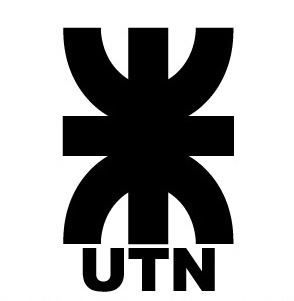Type Publie Students 75,000 (2008) | Established August 19, 1948 | |
 | ||
Former names Universidad Obrera Nacional (National Workers' University) Rector Ing. Héctor Carlos Brotto Vice-rector Ing. Pablo Andrés Rosso | ||
The National Technological University (Spanish: Universidad Tecnológica Nacional, UTN) is a country-wide national university in Argentina, and considered to be among the top engineering schools in the country. Hosting over 75,000 students, its student body is comparable to Argentina's third-largest university (the National University of La Plata) and exceeded significantly only by the University of Buenos Aires (UBA) (over 300,000 students). It has 29 semi-independent branches of various sizes located all over the country.
Contents
The engineering programs taught at most of those locations are:
It is the only national university in the country with a focus on engineering. Many of the available programs have an intermediate diploma as well, typically after completing up to the 3rd or 4th year (generally Analyst's and Technician's degrees). The university also offers a broad range of degrees at tertiary and postgraduate level, including those of Specialist, Master and Doctorate(PhD) in Engineering.
Due to its strongly federalized approach, it is the only university with campuses across the country, graduating almost 50% of the new engineers in Argentina.
Research and Development is conducted in 18 official centers. Some of the areas these centers specialize in are: Chemical Engineering, Information Technology, Energy research, Environmental Science, Robotics, Mechanics, and Construction Engineering.
Enrollment
As it is for most universities in Argentina, the only enrollment requirements are a secondary education degree and passing the university's entrance exam. Because of the low acceptance rate, it is common for applicants to take preparation courses given by either specialized private institutions, or by the university itself. In order to get in the latter, the applicant is required to have a GPA of 8.5/10 or more in his/her final year of secondary education.
The students must declare the specialization of engineering they want to study at the moment of enrolling. If they wish to change it after their studies had begun, they have to take lectures in the specialized subjects. Only the foundational subjects are equivalent between degrees.
Engineer's Degree
After completing a five to six years program (or typically after passing 45 final exams in a longer time period) students earn an Engineer's degree (Eng.), or Título de Ingeniero (Ing.) in Spanish. This is a professional degree with legal backing, enabling its graduates to perform any work in their chosen fields. All the programs include the same engineering foundational courses in Calculus, Physics, Algebra, Analytical Geometry, Probability, Statistics, Chemistry, Technical Drawing, Engineering in Society, Economics and Law.
Because of the length, breath, rigid structure and declaration of intent when enrolling, the degrees are not equivalent to a Bachelor's degree. But the objectives and professional orientation of the courses are similar to the Master of Engineering and it enables graduates to apply for a PhD in Engineering or related disciplines.
Some programs give students the option of getting an Intermediate Engineering Degree (IED) in their chosen fields after finishing the third or fourth year and completing an approved final project. The exact name of the IED varies depending on the field, for example the IED for the Chemical Engineer program is called University Chemical Technician, while the IED for Information Systems Engineer is University Systems Analyst.
Adecuación Curricular
The curriculum has been going through a modernization focused on analytic programs ("adecuación curricular"), and some careers have passed through a certification process ordered by the government agency CONEAU (Comisión Nacional de Evaluación y Acreditación Universitaria). The stated goal of this process is to start adapting the current model in accordance with the Bologna process.
History
The National Technological University (Universidad Tecnológica Nacional, UTN) was established as the National Workers' University (Universidad Obrera Nacional) by Law 13229, signed by President Juan Perón on August 19, 1948. It was created to cover the lack of technical specialists in the country at that time. The degree granted was that of Factory Engineer in many specialties.
The university evolved rapidly. The necessity of professionals with a deeper knowledge was accomplished by big academic and organizational changes. By 1954 the University had 9 branches in Buenos Aires, Córdoba, Mendoza, Rosario, Santa Fe, Bahía Blanca, La Plata, Tucumán and Avellaneda.
On October 14, 1959, the university was renamed as the National Technological University by law 14855. This marked the official beginning of the university as it is today.
Since then, more than 30,000 degrees in engineering have been granted. Today, the university maintains a strong network of international cooperation, and over 75 overseas institutions have signed cooperation agreements with the UTN.
